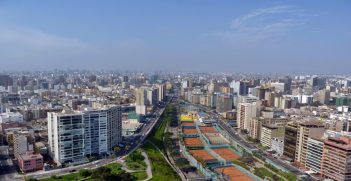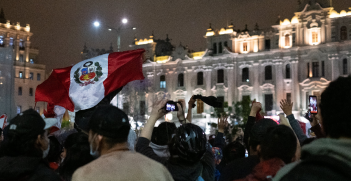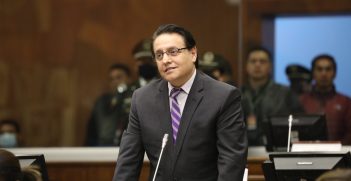Ecuador and Peru’s Impeachment Proceedings: Political Representation in Crisis

What’s going on in Ecuador and Peru? A closer look at the political representation gaps that persist in some Latin American countries shows that economic development alone is sometimes not enough to ensure a stable social and political environment.
The 17 May saw Ecuador’s President Guillermo Lasso dissolve the National Assembly (equivalent to the Australian Parliament) invoking the “mutual death” mechanism and calling for general elections for the 20 August 2023. This happened while the country was going through a surge in homicides and gang-related violence. Meanwhile, earlier on 7 December 2022, Peruvian President Pedro Castillo was sent to jail after an attempt to perform a “self-coup,” forcing the appointment of his vice-president, Dina Boluarte, to the leadership position, and subsequent mass violent demonstrations across the country. Both countries have been improving their economic conditions in the last few years, but these political and social crises could damage their hard-won investment and economic prospects.
Ecuador: Muerte Cruzada
The “mutual death” or muerte cruzada is a constitutional mechanism by which the president can dissolve the parliament and their own position, and call for snap elections for both. The widely unpopular conservative president faced impeachment proceedings by the opposition-led parliament (these impeachment proceedings no longer applied once mutual death was invoked), which highlighted the president’s inability to arrest corruption, particularly in shipping contracts related to oil exports. This was not the first impeachment attempt; previous ones were motivated by the country’s many challenges, such as the rise in homicides and theft, but were unsuccessful. Lasso’s popularity started high from around 70 percent due to his successful management of the vaccination campaign during the pandemic. But this has since rapidly dropped to less than 30 percent due to the delicate domestic security situation and rising living costs.
Ecuador has experienced a surge in homicides and crime-related violence, uncommonly high inflation rates, and rising prices of basic products that have fuelled social unrest and instability. 2022 was the most violent year in Ecuador’s history. More than 4,500 people have been murdered, mostly in drug-related and gang disputes – an increase of more than double compared to 2021. As a result, a country commonly regarded as relatively safe compared to other Latin American nations has seen homicide rates climb from 5.7 homicides per 100,000 inhabitants in 2017 to a rate of 25.5 in 2022.
Despite a strong performing economic recovery, high inflation rates in 2022 have witnessed high increases in basic products and living expenses. Some families now live off an average monthly income that barely surpasses the living costs. Since the dollarisation of its economy, Ecuador has become accustomed to relatively low inflation rates, but this has become an issue since the pandemic. Social instability has obscured any positive economic outcomes and has further complicated Lasso’s political capital among Ecuadorians who don’t see tangible improvements.
These economic costs and the associated corruption charges have caused the president to lose favour, pushing the opposition parties to call for his resignation. The widespread frustration among the people with their politicians’ performance has contributed to a broader a political representation crisis. With the muerte cruzada enacted, Ecuador will need to elect a new government and a National Assembly to address the acute social and security challenges, and to avoid negative spillovers into the country’s long-term economic forecasts.
Peru: widespread resentment towards political elites
With only 16 months in office, Pedro Castillo’s conflicts with the legislature have triggered several political crises. While both tried to oust each other in 2022, the political conflict swiftly escalated when Castillo tried to dissolve the Congress and take over the judiciary in December during his impeachment process. This move failed, mostly due to the historical precedent of these actions, which in 1992 saw the far-right politician Alberto Fujimori rule as an autocrat until 2000. After announcing his intentions, the Constitutional Tribunal declared Castillo’s “self-coup” unconstitutional and law enforcement personnel quickly arrested him. Following the arrest, his vice-president Dina Boluarte was appointed to office.
However, the symbolism and popularity of Castillo among lower and middle-class Peruvians has triggered widespread protests, initially in the southern region but rapidly spreading across the country and even reaching the capital Lima.
Castillo’s performance in office has been highly questionable, but for many he represented the interests of indigenous and the “farmers” class in Peru. In Lima, according to these groups, politics has long been dominated by self-interested and highly repressive political elite. During his short time in office, Castillo appointed more than 70 different ministers and faced several corruption and poor management allegations. Despite this, his imprisonment was considered by his supporters as evidence of how the right-wing political elite has intended to keep indigenous and small farmers, but also low-class Peruvians, under protracted exclusion and political misrepresentation. As a result, the political situation turned violent quite quickly.
Demonstrations were crushed with excessive force, and fuelled by an increase in poverty rates, the country was pushed towards a social crisis. Since 2004, Peru has improved its living conditions, moving from 59 percent of the population in poverty to a record low of 20 percent just before the pandemic. However, in 2022 this indicator rose to 28 percent.
In dealing with the protests, Boluarte’s heavy-handed response has left more than 50 civilians dead and more than 100 seriously injured. The protests have, since January, morphed into something much larger with demonstrators now requesting Boluarte and the Congress to leave, and asking for a new constitution. 71 percent of Peruvians believe their basic rights are under threat. According to the Institute of Peruvian Studies, more than 90 percent of Peruvians disapprove of the Congress, and 74 percent want Boluarte to resign.
What is next?
Ecuador and Peru are going through acute political and social crises stemming from the impeachment proceedings of their presidents. Both cases demonstrate that economic development alone is not enough to address the inequalities and political representation gaps that persist in many Latin American countries. With Ecuador’s “mutual death” declared, the country may soon see a leftist government in office. But the current president also has a few months in office to rule by decree, which can also reconfigure the political forces and preferences in Ecuador.
In Peru, general elections and constitutional reforms might switch the politicians currently in office, but that does not guarantee that the new ones will be better off for the country. Better governance is required for these countries to find ways out of their political crises, and to reach the much-needed stability for their populations’ benefit.
Oscar Parra is a Political Scientist specialising in International Relations and Security. Originally from Colombia, Oscar holds a master’s degree in strategic studies from the Australian National University and is currently part of the academic staff of the Strategic and Defense Studies Centre. He has worked as an independent consultant, and in the non-government sector at ProPacifico Foundation. He is also working with the Institute of Intercultural Studies of Colombia.
This article is published under a Creative Commons License and may be republished with attribution.





